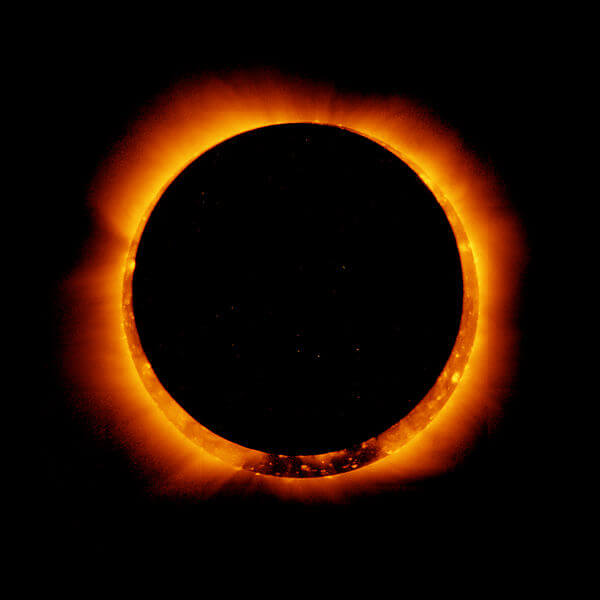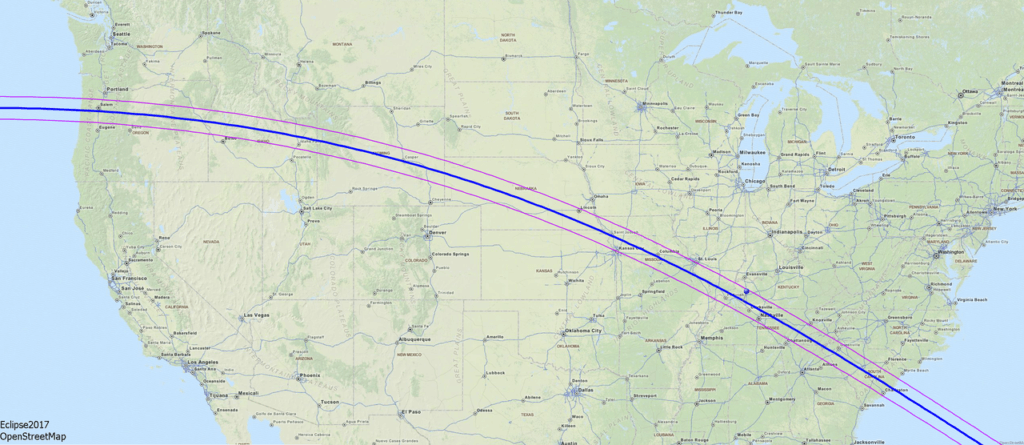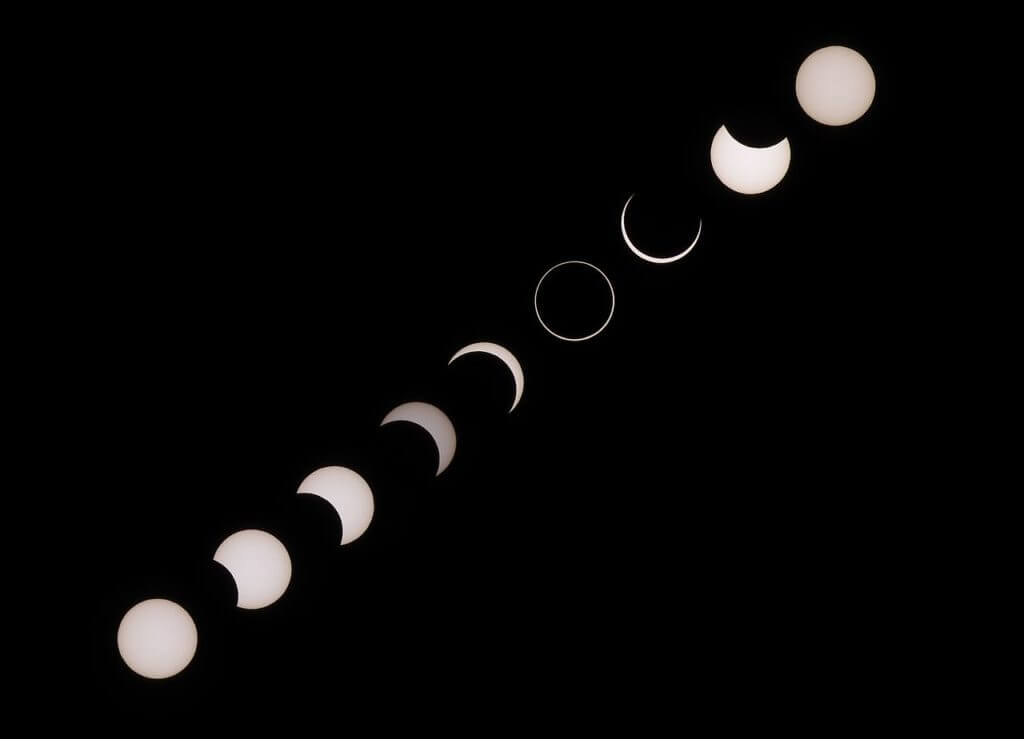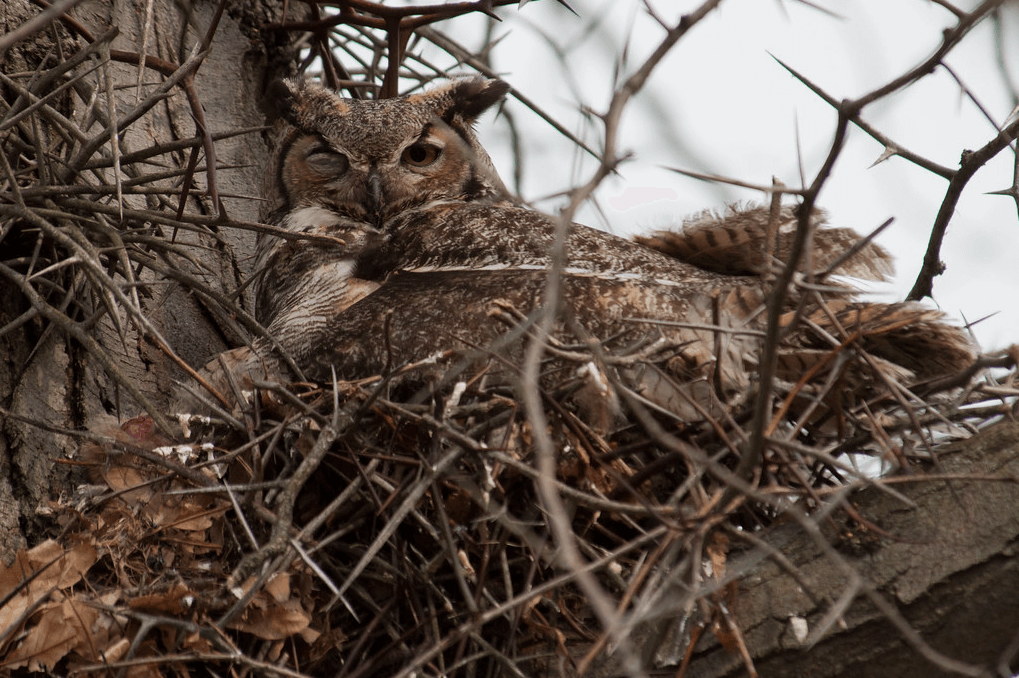The Great Eclipse Caper of 2017
by Bev Engelmann
Broadcast 6.25 and 6.30.2017

Solar Eclipse, photo by NASA, public domain.
Listen:
There’s an event coming your way that’s so significant, the Post Office has issued a commemorative stamp for it: On Monday, August 21, 2017, a historic solar eclipse will occur.
The path of 100 percent totality, spanning parts of 14 states, will extend in an arc across the United States from south of Portland, Oregon, in the west to mid-South Carolina in the east.

Map created by Wolfgang Strickling, CC 2.0 by-SA license
The last time people in the U.S. were able to experience a solar eclipse was back in 1979, and viewing was limited to just a handful of states in the north and northwest. You’d have to go way back to 1918 (99 years ago) to find a solar eclipse that transited the entire U.S. mainland from coast to coast.
What does this mean for Montanans? We’ll experience around 85 to 95 percent totality, depending on your location in the state. This means that you’ll see a nearly complete blockage of the sun, as the moon moves between the sun and Earth and casts its shadow over us. Visually, the dark disk of the moon will occlude the sun, leaving just a 5 to 15 percent sliver of the sun’s bright halo at the top. Think of it as midnight at midday.
For most Montanans, the greatest totality will occur in a time window of approximately 11:30 to 11:50 a.m. Mountain Time. The entire transit event — meaning the time it takes for the moon to move across the face of the sun — will last around two hours and forty-five minutes. So, plan on about an hour and a half on each side of the totality “window” to catch the whole thing.
If you are viewing the eclipse directly, certified eclipse glasses for eye protection are essential. We can’t emphasize this enough.
To view 100 percent totality, you must journey to specific places in neighboring Idaho or Wyoming. Don’t assume that you’ll be able to find accommodations, as this is a major astronomical event, and many places are already booked up.

Image composed by Scoolasse, CC by-SA 4.0 license
NASA has a couple of great interactive websites that will allow you to determine what you can see in your own community, given reasonable viewing conditions.
In a subsequent edition of “Field Notes” closer to the eclipse event we’ll outline the kinds of community resources that will be available for Montana eclipse viewers. Also, should the weather prove uncooperative, we’ll talk about opportunities for indirect viewing, such as imagery downloads from high altitude balloons.
If you have information about how your community plans to participate in the Great Eclipse Event, please send your submission to the Montana Natural History Center at eclipse@montananaturalist.org.
In the meantime, as you anticipate the actual eclipse event, check out the new eclipse stamp from the U.S. Post Office. It features a photograph of a total eclipse taken in Libya in 2006 and is the first of its kind to be printed in thermochromic ink. This means that when you rub the stamp’s eclipse image with your fingers, the generated heat reveals an underlying image of the Moon. Once it’s cooled, the stamp reverts back to the image of the eclipse. Monitor the USPS website for the availability of eclipse stamps, and get ‘em while they’re hot … or cool.
Every week since 1991, Field Notes has inquired about Montana’s natural history. Field Notes are written by naturalists, students, and listeners about the puzzle-tree bark, eagle talons, woolly aphids, and giant puffballs of Western, Central and Southwestern Montana and aired weekly on Montana Public Radio.
Click here to read and listen to more Field Notes. Field Notes is available as a podcast! Subscribe on iTunes, Google Play, or wherever you listen to podcasts.
Interested in writing a Field Note? Contact Allison De Jong, Field Notes editor, at adejong [at] montananaturalist [dot] org or 406.327.0405.
Want to learn more about our programs as well as fun natural history facts and seasonal phenology? Sign up for our e-newsletter! You can also become a member and get discounts on our programs as well as free reciprocal admission to 300+ science centers in North America!












